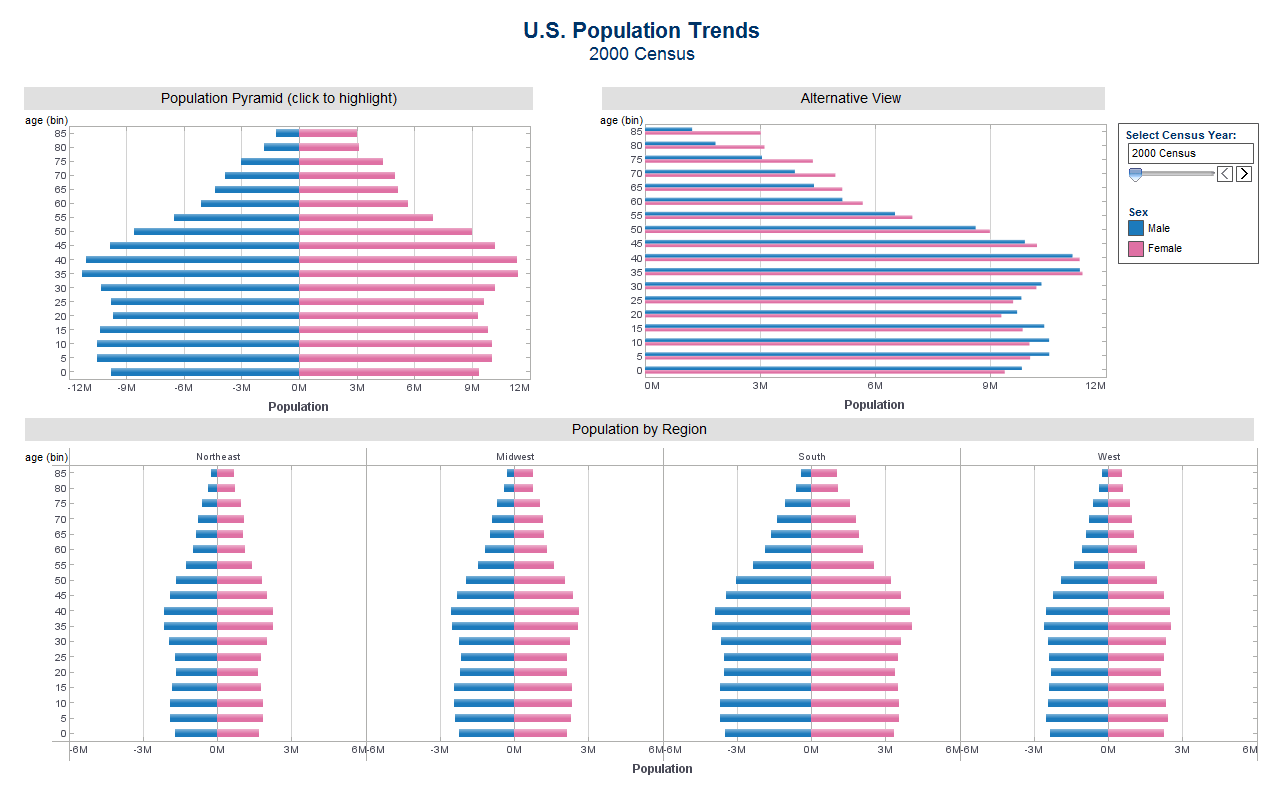Key Performance Metrics to Benchmark Against
Below is the continuation of a transcript of a Webinar hosted by InetSoft on the topic of "Performance Management in Government." The presenter is Christopher Wren, Principal Consultant at GPM.
Christopher Wren (CR): But in these cases where you don’t know which key performance metrics to benchmark against, one thing you can do is to look not only in this country but abroad as well. If you are working in an area where you can’t find a private or public peer who is doing what you are doing, or measuring what you are measuring, then look to some of the foreign countries abroad. We have been working with countries including Germany, China, Spain, Italy and others and taking a look at their measures and they in some instances specifically in Europe and they have gone farther in performance measurement than we have. So that is something to keep an eye on.
The next question is, are we measuring the right things. In other words, some of the things that we have used for years as performance measures may not be the best way to measure our performance. I think the one I wanted to focus on here is gross domestic product. That’s a measure that in economics has been used for many years, but more and more we are seeing people move to the net household income standard because that gives you really a better take on how people are doing where it matters at the individual and at the household level.
 |
View a 2-minute demonstration of InetSoft's easy, agile, and robust BI software. |
The Misery Index
Have you heard of the Misery Index? The Misery Index was developed by Moody’s, and it’s a good example of a group that said hey, look, the current measure is not good enough. We are not getting exactly what we want. It’s not telling the right story. And after all, measures need to tell a very clear story. So in this case Moody’s combined the unemployment rate and the budget deficit as a percentage of GDP for various countries.
You can see the countries on the chart here over the last 15 years or so and what they have found is the Misery Index really took off. People really like that measure because it told a story much more clearly and maybe more accurately than the separate measures. So looking at indexes sometimes you need to combine measures to really get your message out there, and sometimes that means creating a new index.
Now, take healthcare. There has been a lot of discussion around better ways to measure new government services including healthcare reform. What we are talking about here is individual services increasingly. The way we have been measuring medical care and health outcomes in this country was considered inadequate, and so as part of the healthcare bill, there was a passage that talked about developing new measures in a national scorecard around health outcomes.
KPMs for Pediatric Healthcare
Key performance metrics in pediatric healthcare are essential for assessing the quality of care provided to children and ensuring optimal health outcomes. One crucial metric is immunization rates, which measure the percentage of children receiving recommended vaccines within the recommended timeframe. High immunization rates are vital for preventing the spread of infectious diseases and protecting the health of the pediatric population. Monitoring immunization rates allows healthcare providers to identify areas of improvement and implement strategies to increase vaccination coverage, ultimately reducing the risk of vaccine-preventable illnesses in children.
Another important performance metric in pediatric healthcare is the rate of well-child visits. Well-child visits are routine check-ups that allow healthcare providers to monitor a child's growth and development, screen for potential health issues, and provide preventive care. The frequency of well-child visits can vary based on age, with more frequent visits during infancy and early childhood. Monitoring the rate of well-child visits helps healthcare providers ensure that children are receiving timely and comprehensive care, identify gaps in care delivery, and promote early detection and intervention for health concerns.
Additionally, pediatric healthcare providers track metrics related to patient satisfaction and experience. Patient satisfaction surveys allow caregivers and parents to provide feedback on their experiences with pediatric healthcare services, including aspects such as communication with providers, wait times, and the overall quality of care received. Monitoring patient satisfaction metrics helps healthcare organizations identify areas for improvement, enhance the patient experience, and foster positive relationships with patients and families. Moreover, a positive patient experience is associated with better health outcomes and increased adherence to treatment plans, underscoring the importance of prioritizing patient satisfaction in pediatric healthcare.
Finally, healthcare organizations in pediatric settings also monitor metrics related to chronic disease management and preventive care. These metrics may include the percentage of children with chronic conditions who receive recommended screenings and treatments, adherence to treatment plans, and the management of chronic conditions such as asthma, diabetes, and obesity. By tracking these metrics, healthcare providers can assess the effectiveness of interventions, identify opportunities for improvement in care coordination and patient education, and ultimately optimize outcomes for children with chronic health needs. Overall, a comprehensive approach to measuring key performance metrics in pediatric healthcare is essential for promoting the health and well-being of children and ensuring high-quality care delivery.
| Previous: Key Performance Measures in Government |
Next: Government Scorecarding
|
